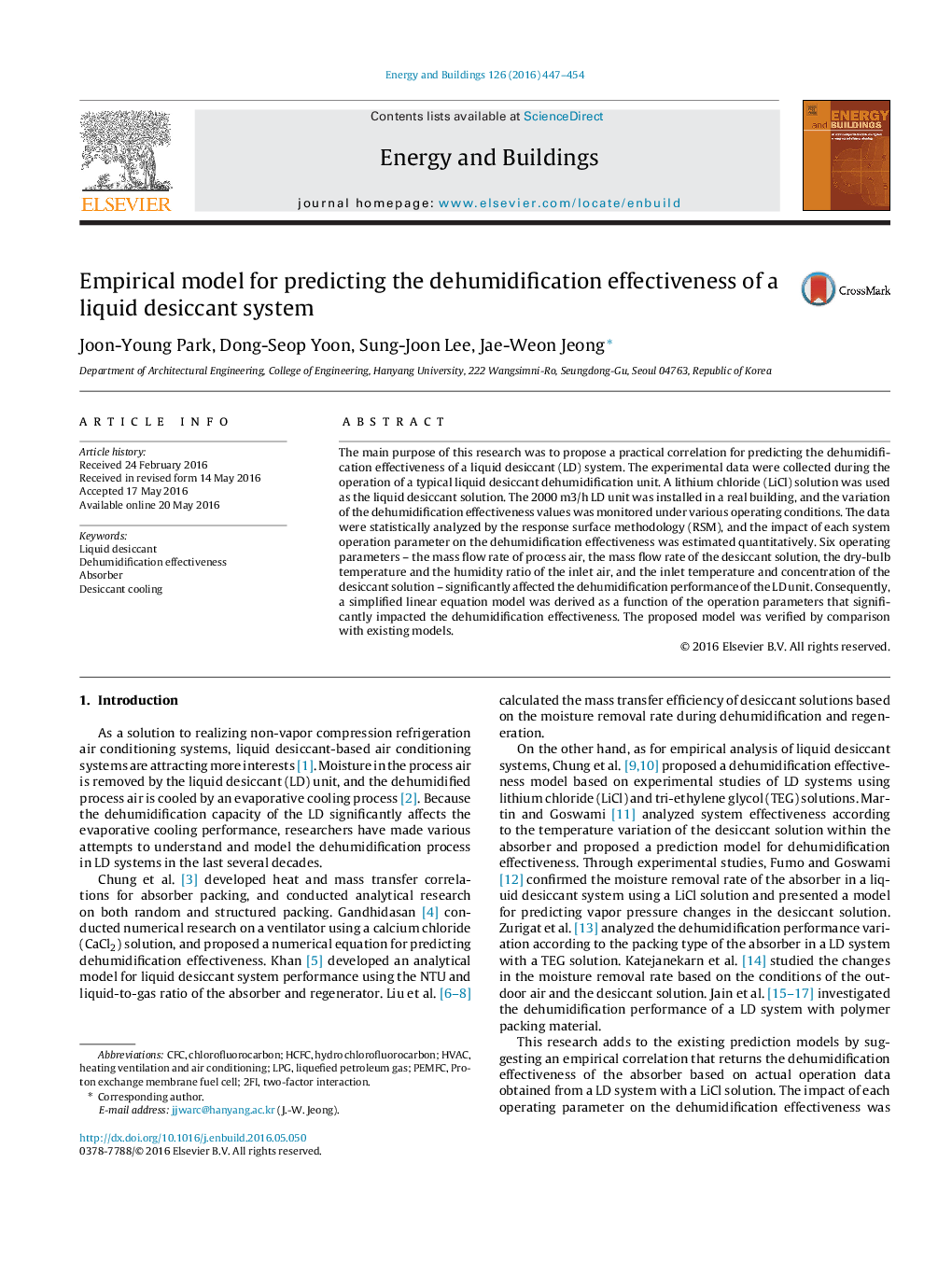| کد مقاله | کد نشریه | سال انتشار | مقاله انگلیسی | نسخه تمام متن |
|---|---|---|---|---|
| 261947 | 504006 | 2016 | 8 صفحه PDF | دانلود رایگان |
• An empirical model of an absorber in a liquid desiccant system was proposed.
• The experimental data were obtained from liquid desiccant system operation.
• Proposed model was verified by comparing with existing models.
The main purpose of this research was to propose a practical correlation for predicting the dehumidification effectiveness of a liquid desiccant (LD) system. The experimental data were collected during the operation of a typical liquid desiccant dehumidification unit. A lithium chloride (LiCl) solution was used as the liquid desiccant solution. The 2000 m3/h LD unit was installed in a real building, and the variation of the dehumidification effectiveness values was monitored under various operating conditions. The data were statistically analyzed by the response surface methodology (RSM), and the impact of each system operation parameter on the dehumidification effectiveness was estimated quantitatively. Six operating parameters – the mass flow rate of process air, the mass flow rate of the desiccant solution, the dry-bulb temperature and the humidity ratio of the inlet air, and the inlet temperature and concentration of the desiccant solution – significantly affected the dehumidification performance of the LD unit. Consequently, a simplified linear equation model was derived as a function of the operation parameters that significantly impacted the dehumidification effectiveness. The proposed model was verified by comparison with existing models.
Journal: Energy and Buildings - Volume 126, 15 August 2016, Pages 447–454
